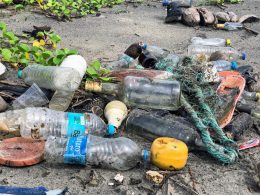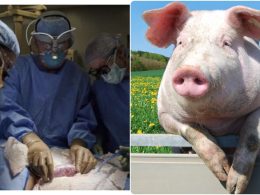As the world continues to progress and economies grow, there is an ever-growing need to balance economic growth with environmental preservation. It’s a delicate tightrope walk that requires careful consideration of both short-term gains and long-term sustainability. The intersection of science and policy is where we can find solutions to this challenge. In this blog post, we will explore the pros and cons of economic growth vs. environmental preservation, examine how science can help us strike a balance between the two, and offer policy recommendations for creating a sustainable future for our planet. So grab your thinking caps as we dive into this crucial topic!
The Need for a Balance between Economic Growth and Environmental Preservation
The need for a balance between economic growth and environmental preservation has become increasingly urgent in recent years. On one hand, economic growth is necessary to improve living standards and provide opportunities for people around the world. However, unchecked economic development often comes at the cost of the environment.
Environmental degradation can have severe consequences that are felt not just by nature but also by humans who depend on natural resources. Pollution, deforestation, soil erosion, and climate change are just some examples of how unbridled economic activity can harm our planet.
At the same time, we cannot ignore the importance of economic growth. It creates jobs and generates income that supports families and communities. Without it, many countries would struggle to meet their basic needs.
Therefore, finding a balance between these two seemingly opposing forces is crucial if we want to create a sustainable future for ourselves and generations to come. Balancing economic progress with environmental preservation requires us to think critically about our choices as individuals and policymakers alike.
Economic Growth vs. Environmental Preservation: The Pros and Cons
The debate between economic growth and environmental preservation has been ongoing for decades. On one hand, there are those who argue that prioritizing economic growth is essential to improve the standard of living for everyone. Meanwhile, others believe that preserving nature is crucial to ensure a sustainable future.
Advocates of economic growth argue that it creates job opportunities and drives innovation in various industries. The more developed an economy becomes, they say, the better equipped it will be to invest in green technologies and sustainable practices.
However, this approach often comes at a high cost to the environment. As we prioritize profit over conservation efforts, we risk degrading natural habitats and causing irreversible damage to our planet’s ecosystems.
On the other hand, supporters of environmental preservation acknowledge that protecting nature can sometimes come at a financial cost but contend that safeguarding our natural resources should be a top priority for humanity’s long-term survival.
Critics argue that focusing too much on preserving nature could lead to stagnation in development and harm poorer communities’ welfare. Still, proponents maintain that these concerns can be addressed by pursuing alternative strategies such as eco-tourism or investing in renewable energy sources like solar power or wind turbines.
Finding a balance between economic growth and environmental preservation remains an ongoing challenge for policymakers worldwide. It requires careful consideration of both short- and long-term impacts on people’s lives while ensuring ecological sustainability for future generations.
How Science Can Help Us Find a Balance between Economic Growth and Environmental Preservation
Science plays a crucial role in helping us find a balance between economic growth and environmental preservation. Through scientific research and analysis, we can better understand the impact of human activities on the environment and develop strategies to mitigate negative effects.
One way that science can help is by providing data-driven solutions for sustainable development. By studying patterns of resource use, pollution levels, and biodiversity loss, scientists can identify areas where changes are needed to achieve a more balanced approach to economic growth.
Another important aspect of science in this context is its ability to inform policy decisions. Environmental policies must be based on sound scientific evidence if they are going to be effective in achieving their goals. Researchers can provide policymakers with valuable information about the costs and benefits associated with different approaches to environmental protection.
Technological advancements resulting from scientific discoveries also offer potential solutions for finding a balance between economic growth and environmental preservation. For example, renewable energy technologies like solar power or wind turbines could replace fossil fuels as major sources of energy production without compromising economic growth.
Science has an essential role in helping us find a balance between economic growth and environmental preservation. It provides us with critical insights into the impact that our actions have on natural systems while simultaneously offering innovative solutions that allow both nature and society to thrive together sustainably.
Policy Recommendations for Balancing Economic Growth with Environmental Preservation
Policy Recommendations for Balancing Economic Growth with Environmental Preservation:
As we have seen, economic growth and environmental preservation can be at odds with one another. However, it is possible to strike a balance between these two goals through policy solutions.
One key recommendation is to implement regulations that restrict companies from engaging in harmful practices such as pollution and deforestation. By imposing penalties on those who violate these regulations, we can incentivize companies to prioritize sustainability over short-term profits.
Another important step is investing in sustainable technologies and industries that contribute to both economic growth and environmental protection. This could include renewable energy production or eco-tourism initiatives.
Governments should also consider implementing taxes on carbon emissions or other environmentally damaging activities, which would provide an incentive for businesses to reduce their negative impact on the environment while generating revenue for green projects.
Promoting public awareness campaigns about the importance of sustainability and the benefits of preserving our natural resources can go a long way towards creating a culture of conservation.
By utilizing policies like these, we can create a future where economic growth coexists harmoniously with environmental preservation.
Conclusion
Balancing economic growth with environmental preservation is a complex issue that requires careful consideration of scientific evidence and policy recommendations. While economic growth may be necessary for job creation and increased living standards, it can also have negative impacts on the environment, such as air and water pollution.
On the other hand, preserving the environment can lead to restrictions on business activities that could stifle economic growth. However, science can help us find ways to balance these competing priorities by providing solutions that promote sustainable development while minimizing environmental harm.
Policy recommendations such as investing in clean energy technologies or implementing stricter regulations on polluting industries have shown promise in achieving this balance between economic growth and environmental preservation.
Ultimately, finding a balance between economic growth and environmental preservation requires collaboration across sectors, including governments, businesses, scientists, and communities. By working together towards this goal we can ensure a healthy planet for future generations while promoting sustainable economic development.












